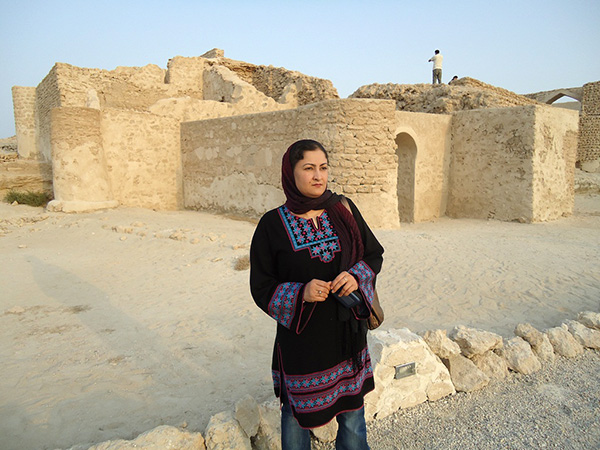Home - GFMER Country Coordinators
Homa Kabiri
GFMER Coordinator for Afghanistan

Dr. Homa Kabiri, MD, Obstetrician/Gynecologist
Director of Clinical Specialization Department, Ministry of Public Health, Kabul, Afghanistan
Email: homa.kab@gmail.com
Homa Kabiri - Curriculum vitae
Country situation of reproductive health
Afghanistan has made significant progress in rebuilding its health system, despite years of continuous conflict. The 2006 Health Survey found that the number of female staff has increased. The number of graduated midwives has increased to 1961 in 2009 compared to 467 midwives in 2003. According to the newly released State of the World’s Midwifery (SOWM) report, there were 2,331 midwives, nurse/midwives and nurses with midwifery competencies and an additional 254 auxiliary midwives and auxiliary nurse/midwives in the labor force in 2008 (UNFPA, 2011). There has been a gradual increase in the births attended by skilled birth attendants (SBAs). The Afghanistan house hold survey showed that 19 percent of births are attended by SBAs while NRVA, 2007 shows that the overall proportion of women delivering with a skilled birth attendant is 24 per cent. Around one-third (34 percent) of births are delivered with the assistance of an SBA (doctor or nurse/midwife). Assessment of health services using the balanced score card (BSC) approach in 2006 found that women were more likely than men to access services. The 2010 National EmONC assessment shows none of the health facilities at any level achieved the goal of one skilled attendant for every 100 expected births. The ratio of midwives to 100 expected births at both the district and regional hospitals was zero and CHCs, RHs and SHs all had small ratios of 0.1. After analyzing deaths among women of reproductive age from 1999 to 2002 at four sites in Afghanistan, one assessment (Bartlett et al., 2005) estimated the lifetime risk of maternal death at one in six to one in nine, According to AMS (Afghanitan Mortality Survey 2010) approximately one in every fifty women will die of pregnancy related causes during life time. The risk of maternal death was considerably lower in urban areas and increased with remoteness in rural areas. Two more recent global reviews estimated the 2008 MMR in Afghanistan at 1400 deaths respectively, although considerable uncertainty surrounds these numbers due to lack of data. The reviews make clear; however, that maternal mortality in Afghanistan remains extremely high in the region. The pregnancy-related mortality ratio for Afghanistan is 327 deaths per 100,000 live births for the seven-year period before the survey. This estimate is equivalent to 3 deaths per 1,000 live births or 0.3 percent of all live births (AMS). Much work remains to be done, despite significant efforts by the Reproductive Health Directorate of MoPH in the last seven years to prioritize maternal and newborn health and increase access to services.
High infant mortality is also a concern in Afghanistan. The infant mortality rate (IMR) was estimated at 129 deaths per 1,000 live births in 2006 (MoPH, 2006), and the neonatal mortality rate at 60 per 1,000 live births in 2004 (UNICEF, 2010). The under-5 mortality rate for Afghanistan adjusted to take into account omission is 97 deaths per 1,000 births and the infant mortality rate is 77 deaths per 1,000 births, neonatal mortality excluding the south zone 40 deaths per thousand (AMS).
Total fertility rate is 6.6 (UNICEF, 2008. Afghanistan Statistics) and contraceptive prevalence rate (CPR) is 22.8% (NRVA, 2007). The national household survey conducted by the Ministry of Public Health (MoPH) in 2006 reported that 33% of currently married women demonstrated knowledge of at least one modern method of contraception. Total fertility rate is 5.1 and contraceptive prevalence rate is 20. Ninety-two percent of all women know at least one modern method of contraception. Forty-five percent know a traditional of contraceptive method (AMS). Use of family planning has increased markedly in the last seven years in Afghanistan.
The National Reproductive Health Strategy, 2006-2009, has contributed in improving the health of the people of Afghanistan, especially women and children, through implementing the basic package of health services (BPHS) and the essential package of hospital services (EPHS) as the standard, agreed-upon minimum of health care to be provided at each level of the health system.
BPHS and EPHS packages for health services of MoPH should be adopted in accordance to the national policy and strategy documents of Reproductive health during future revisions.
GFMER past activities in the country
Since two years some health providers of Afghanistan took benefit of attending the Training Course in Sexual and Reproductive Health and their capacity was built in Research methodology in reproductive health.
An online course of Eclampsia and pre-eclampsia (The Oxford Evidence-based Management of Pre-eclampsia and Eclampsia Tool) was conducted for obstetricians of Kabul maternity hospitals by GFMER.
GFMER activities developed in 2012 in the country
In 2012 the course is widely announced in Afghanistan and a country coordinator is assigned to facilitate the process.
- Meeting with the course participants in Afghanistan - Homa Kabiri, GFMER Coordinator for Afghanistan
Future plans or initiatives
- This training program will be further introduced to allover of Afghanistan for encouraging the health providers in provinces and remote areas to join and use this learning opportunity.
- A network of the course participants and course alumni will be created and facilitated.
- An introductory workshop will be designed and conducted for course participants to help them utilize the course content in better way.
Useful links and documents from the country
- Ministry of Public Health Afghanistan
- Afghanistan Mortality Survey 2010
- National Strategy for Improving Quality of Health Care
- Ministry of Public Health Strategic Plan, 2011-2015